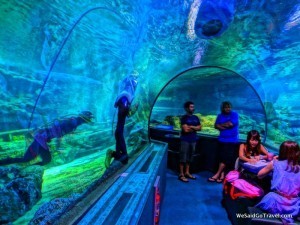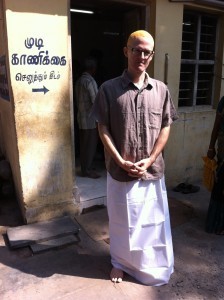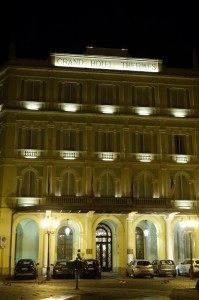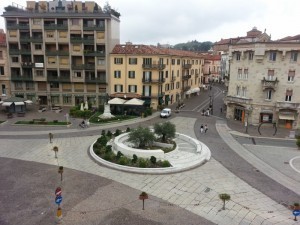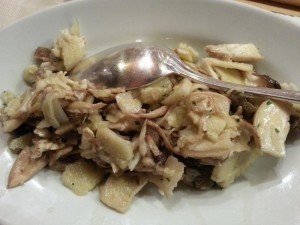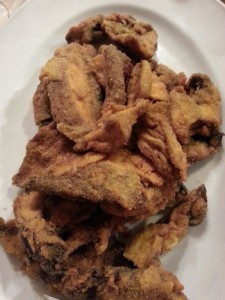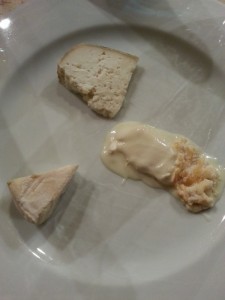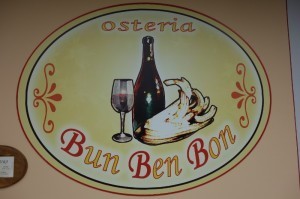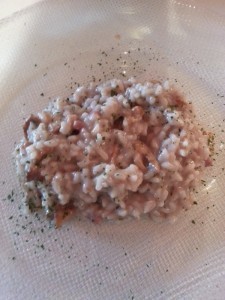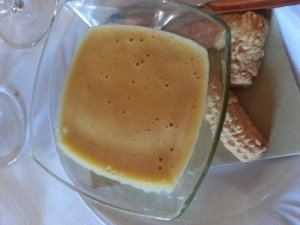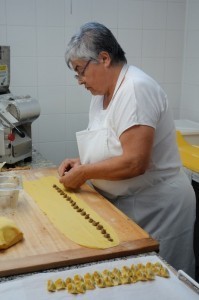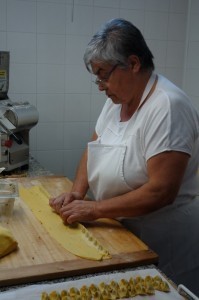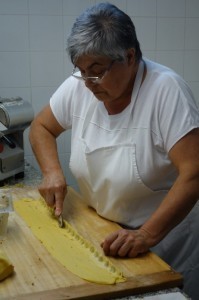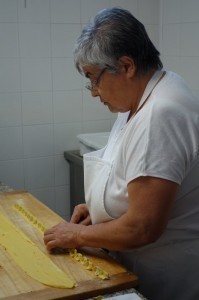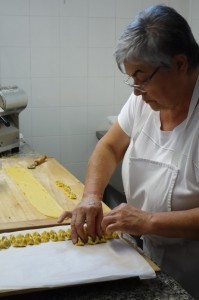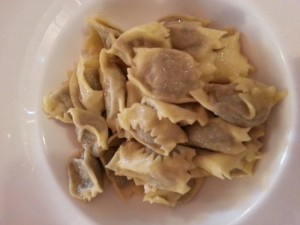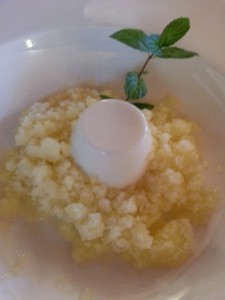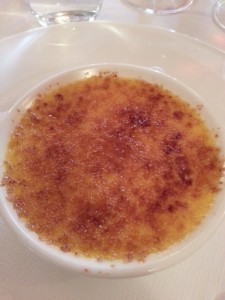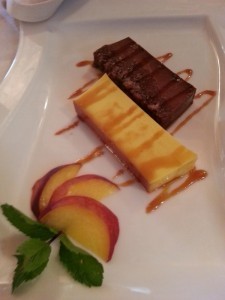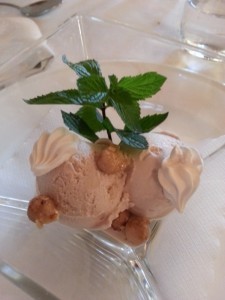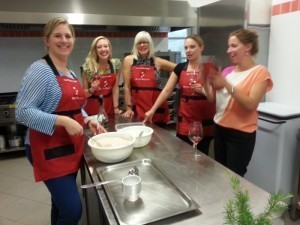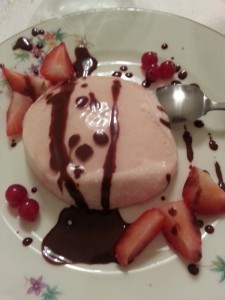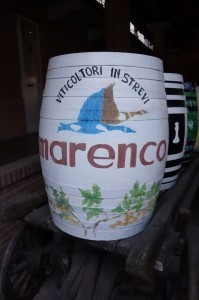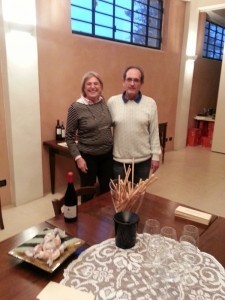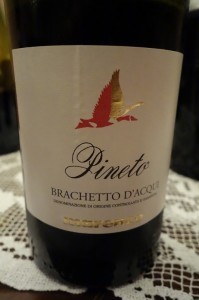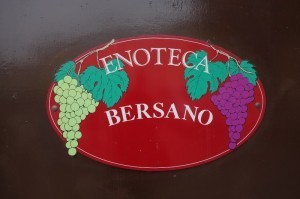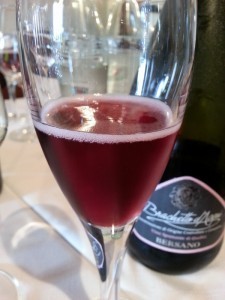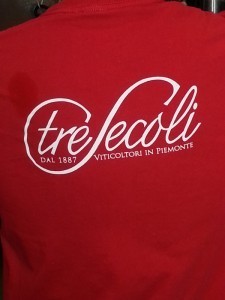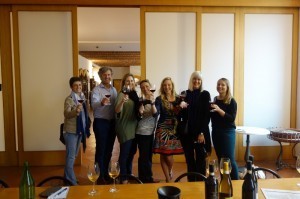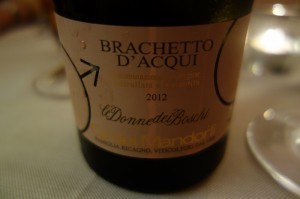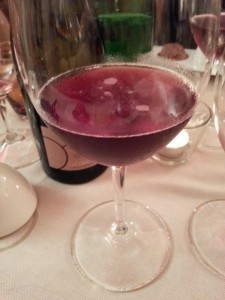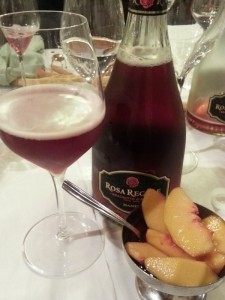Lisa Niver's Blog: We Said Go Travel, page 407
March 22, 2014
Creating Moments in time in Ecuador
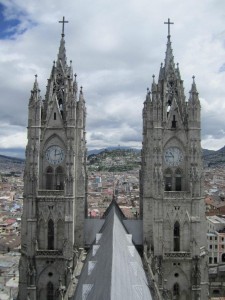 Time is an illusion; a man-made restriction set upon ourselves to dictate order and retain control. We attach verbs to it like spend, save, waste, kill, take and run out of, hoping to grasp onto time as though it were some tangible thing. We define life itself as a certain amount of time spent upon the Earth. The Basilica del Voto Nacional, however, showed me that life is not so much about spending time, but rather about creating moments and building memories.
Time is an illusion; a man-made restriction set upon ourselves to dictate order and retain control. We attach verbs to it like spend, save, waste, kill, take and run out of, hoping to grasp onto time as though it were some tangible thing. We define life itself as a certain amount of time spent upon the Earth. The Basilica del Voto Nacional, however, showed me that life is not so much about spending time, but rather about creating moments and building memories.
It was the first building I saw when the taxi approached Quito’s historical center. With frontal towers reaching 115 meters toward the heavens, the Basilica del Voto Nacional, looming over the rest of the city, was hard to miss. Immediately I decided that the centuries-old, neo-gothic church warranted a closer look; little did I know, that it would be where I would spend the rest of the day.
A 15 minute walk took me to the gates of the basilica and I stared up, up, up in awe of its sheer size and dark beauty, wondering what stories and mysteries its walls had seen, heard and kept. I snapped a few photographs and then ventured into the grounds to take a closer look still. The church itself seemed closed and I had just mentally settled for strolling around the perimeter, when a woman approached me from within and asked if I wanted to go up into the tower. She laughed openly at my childish, excited response and reconfirmed that yes, I really could. After exchanging USD 2.00 for a ticket, I made my way over to a rickety elevator and rode it to the “third floor.”
Somewhat confused, I stepped out of the elevator and into an empty room, all its windows closed, cracked and dusty. Then, relieved, I realized the room ended on the other side through a small opening, onto the rafters of the church roof. A wooden walkway across the center beam led to a ladder going in the direction I sought – up. Victorious, I climbed the ladder and found myself on a balcony encircling tall, hexagonal stained glass windows, and overlooking the town. I was thrilled.
As I looked down and around, taking more photographs, I realized that more and more people were emerging on this small balcony and heading back down the ladder from which I had emerged, than could have possibly been there before without me noticing. Curious, I walked around to the opposite side of the platform and came across a steep set of stairs going upward. There being nothing and no one to stop me from going up, I did. For someone who is not afraid of heights, I was a bit apprehensive! The stairs were steel, steep and quite far apart, with nothing but a flimsy, slack stretch of chicken wire between them, and nothing below them but air and eventually, the ground. Excited nonetheless, I laboriously made my way up and was well-rewarded when I found myself standing in the spire of the transept, and had it all to myself. Seventy-four meters up, I had a lovely view of downtown Quito and the surrounding hills.
I cannot say how long I spent up there, alone, breathing in the wonder of the city and marveling at the colossal structure surrounding me – holding me up and giving me new perspective. When at last I had had my fill, I clambered back down and headed in the general direction of the clock towers, as I was sure I had seen someone in one from my view from the spire. I quickly found a set of stairs with a sign indicating they led to the clock tower and with renewed energy, I once again began to climb. Stair after stair – some concrete, some steel, some straight, some spiral – I wound my way up and up until I was in the clock.
I was inside a clock! A machine that gives meaning to time. A time machine. I reveled in that fact for a while, before noticing the broken mechanics and stationary cogs. Time was not ticking. Pulling out my camera I quickly flipped through the digital images until I found what I was looking for – the shot I had taken of the clock towers, from the spire. Sure enough, each clock showed a different time.
Time was frozen; it had no meaning here. I did not know when I had arrived at the basilica, or how long I had been there; it did not matter. I had only a sense of great calm and contentment, free from all constraints. Smiling, I basked in the silence of time’s stationary state, and walked on toward the bell tower to continue creating my moment, that I would later build into this memory.
About the Author: Sophie Leroy was raised in the British Virgin Islands, where she still currently resides. She loves the ocean, reading, pizza, the colour blue and her dog, Bear. At present, she is avidly exercising her passion for writing so that she may someday quit her day job.
Thank you for reading and commenting. Please enter our next Travel Writing competition and tell your story.
The post Creating Moments in time in Ecuador appeared first on We Said Go Travel.
Guam: “The Hub of Micronesia” Hafa Adai
As our airplane descended toward Guam after departing Palau’s International airport in the wee hours of the morning, I reflected on how little I knew about the U.S. territory island called Guam. I knew the island of Guam, situated in eastern Micronesia, has had a strong U.S. military background; I also was aware that in the early 1960s – before I was born – my late mother was offered an elementary teaching position in Guam that she thankfully rejected in favor of remaining together with whom would eventually become my future father. I realized that my limited perceptions would be quickly morphed over the ten days that we would remain on Guam.
Tumon Bay is the center of Guam’s tourist infrastructure with modern hotels and stylish shopping malls. It would be difficult to beat lodging at the high rise Outrigger Guam Resort located on the eastern side of Tumon Bay with sparkling white sand beaches lining the lengthy coastline. The spacious rooms are modern and comfortable with outstanding ocean views elevated over the bay. Recommended is the upgrade to the Voyagers Club Lounge where guests enjoy a free tasty buffet breakfast from 7:00-10:00am and entrance to enjoy cocktails and hors d’oeuvres from 5:00-7:00pm nightly while taking in stellar views from the 21st floor overlooking Tumon Bay.
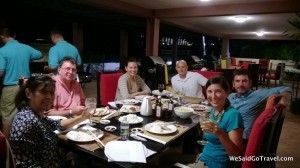 Water sports such as kayaking and paddleboats are available in front of the Outrigger Hotel. For a memorable dining experience, be sure to join the staff at the Outrigger Hotel for its “Beachside Barbeque Dinner” that offers a variety of Chamorro foods just off the beach. The opposite side of the bay offers excellent snorkeling just in front of the lifeguard station fronting Ypao Beach Park. The ocean here teems with schools of needle nose and other tropical fish that swim among the hard coral.
Water sports such as kayaking and paddleboats are available in front of the Outrigger Hotel. For a memorable dining experience, be sure to join the staff at the Outrigger Hotel for its “Beachside Barbeque Dinner” that offers a variety of Chamorro foods just off the beach. The opposite side of the bay offers excellent snorkeling just in front of the lifeguard station fronting Ypao Beach Park. The ocean here teems with schools of needle nose and other tropical fish that swim among the hard coral.
Located across the street from the Outrigger Guam Resort are a variety of fine shopping complexes such as the DFS Galleria that houses a variety of high-end designer boutique shops including Rolex, Cartier, Prada, and Armani.
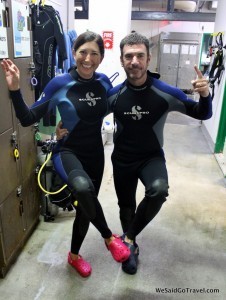 Also adjacent to the Outrigger Hotel is Underwater World Guam, a large pristine aquarium where a variety of sharks, rays, turtles and tropical fish inhabit the spacious tunneled aquarium. It showcases over twenty sharks including black and white tip, leopard, and nurse sharks who menacingly bump large puffer fish and groupers that live among the schools of jackfish. Relaxed tourists can enjoy the aquarium seated underneath the tunnel with a cocktail in hand or the more daring can submerge themselves in the tank using the Sea Trek system that permits individuals to watch the aquatic world from within the tank 8-12 feet beneath the surface. Since the air is not compressed, travelers can fly within four hours of having swam with stingrays and a variety of sizeable sharks.
Also adjacent to the Outrigger Hotel is Underwater World Guam, a large pristine aquarium where a variety of sharks, rays, turtles and tropical fish inhabit the spacious tunneled aquarium. It showcases over twenty sharks including black and white tip, leopard, and nurse sharks who menacingly bump large puffer fish and groupers that live among the schools of jackfish. Relaxed tourists can enjoy the aquarium seated underneath the tunnel with a cocktail in hand or the more daring can submerge themselves in the tank using the Sea Trek system that permits individuals to watch the aquatic world from within the tank 8-12 feet beneath the surface. Since the air is not compressed, travelers can fly within four hours of having swam with stingrays and a variety of sizeable sharks.
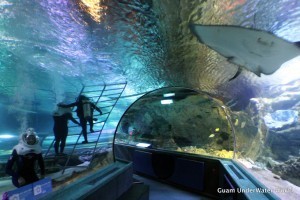 After enjoying the underwater aquatic life, be sure to dine at Sea Grill where fine filets of fish and tasty lobster is available in a room that overlooks the neon lit street below at night. Chamorro seasonings, spices, and sauces add unique flavors to quench demanding appetites.
After enjoying the underwater aquatic life, be sure to dine at Sea Grill where fine filets of fish and tasty lobster is available in a room that overlooks the neon lit street below at night. Chamorro seasonings, spices, and sauces add unique flavors to quench demanding appetites.
Even though the Chamorro culture has diminished notably due to outside influences from the Spanish, Japanese, and Americans, the south east end of Guam near the village of Inalahan enables visitors to get a glimpse of the Chamorro culture’s past. During an hour tour with a local Chamorro guide, guests visit the Mariano and Ana Leon Guerrero home from 1901 where sixteen children once slept in a large room. We also learned the Chamorro removed seawater outside the reef – higher in salt content – to make sea salt that they used to trade and preserve food. The Chamorro people also used the coconut and let nothing go to waste. The leaves were woven into place mats, and baskets. Weaving sturdy rope was accomplished by using a manual machine that intertwines the rope fibers.
Outdoor activities away from the water that are available in Guam include a multitude of hikes around the island, concentrated in the southwest central region near Mount Lam Lam, the highest mountain on earth. How can it be the highest mountain on earth? It depends on how the measurements are calculated. If measuring from the bottom of the extremely deep Mariana Trench, even Mount Everest standing at 29,040 feet would be miles below the ocean surface while Mount Lam Lam stands 1,245 feet above sea level. We hiked down toward Sella Bay. The sea view was lovely with wild orchids growing just off the main trail. Due to heavy rain, the trail was slippery, making relatively short distances hard to cover. After traversing one of the many heat-soaked mountain trails, we recommend cooling off in one of many waterfalls situated around the island. Lower Sinisa Falls is well know and suggested.
As our time in Guam and Micronesia came to an end, I reflected about the beautiful aquatic life, the lush green setting, and the friendly local people who speak English as if they were born on the mainland United States. Having visited Micronesia for the first time to the islands of Palau and Guam, we became aware that other places in the region are worthwhile to visit such as the preserved culture on Yap, the manta diving off Chook, and the historical significance of Saipan and Tinian during WWII.
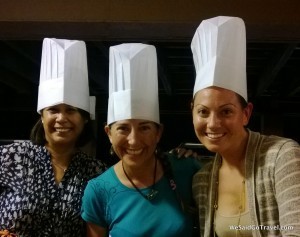 As we departed in the early morning to Oahu, I realized that we had only caught a glimpse of what Micronesia has to offer and look forward to come back and learn more about the region. Since Guam is the modern hub of the area for those traveling from the U.S., we look forward to spending our first few days in Guam, relaxing in style and enjoying fine dining at the Avenue Restaurant situated within the Outrigger Hotel Resort where delicious fresh fish, lobster and steak is served with accompanied vegetables and an extensive fresh salad bar. Then we will be tranquil and prepared to appreciate the more remote areas of Micronesia.
As we departed in the early morning to Oahu, I realized that we had only caught a glimpse of what Micronesia has to offer and look forward to come back and learn more about the region. Since Guam is the modern hub of the area for those traveling from the U.S., we look forward to spending our first few days in Guam, relaxing in style and enjoying fine dining at the Avenue Restaurant situated within the Outrigger Hotel Resort where delicious fresh fish, lobster and steak is served with accompanied vegetables and an extensive fresh salad bar. Then we will be tranquil and prepared to appreciate the more remote areas of Micronesia.
Guam Videos. Our next stay was at Outrigger Reef on the Beach in Oahu. We thank Outrigger Hotels and Resorts for inviting us! All opinions are our own and we cannot wait to go back!
Written by George Rajna
The post Guam: “The Hub of Micronesia” Hafa Adai appeared first on We Said Go Travel.
I Dream of Italy in Rome
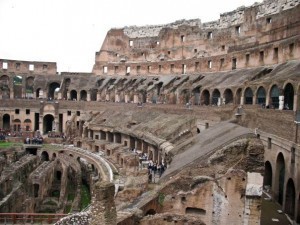 The train lurched to a stop and I double checked to make sure this was where I was to get off. The sign read Colosseo. I stepped off the train and stopped at a bench to find my map and directions as to what exit to take. I was still a relatively new traveller, and the prospect of getting lost frightened, rather than excited me, as it does now. I made sure no one could see what I was looking at, something my mother had told me to do to blend in. My hair was dyed black then and I could easily be mistaken as an Italian, rather than a tourist. I was a young, naive woman travelling alone and I couldn’t be too careful.
The train lurched to a stop and I double checked to make sure this was where I was to get off. The sign read Colosseo. I stepped off the train and stopped at a bench to find my map and directions as to what exit to take. I was still a relatively new traveller, and the prospect of getting lost frightened, rather than excited me, as it does now. I made sure no one could see what I was looking at, something my mother had told me to do to blend in. My hair was dyed black then and I could easily be mistaken as an Italian, rather than a tourist. I was a young, naive woman travelling alone and I couldn’t be too careful.
I was exhausted. I was booked in for three nights at a hostel near Termini Station. It had a great location and was cheap, but it wasn’t one of those hostels that defy all the stereotypes. It was the stereotype. The showers were grimy, the whole place smelled of mildew, the mattresses were lumpy, and the workers were rude and barely spoke any English. Yet years later, I still recall my time there fondly. There was free breakfast, as well as a free pasta dinner every night, and free wine. More importantly, were the others staying there. We had stayed up the night before singing while one of the members of our newly formed United Nations group strummed the hostel guitar. Just as we were gearing down to head to bed, a loud French band with a neon orange tuba came in. They were there for a competition and we ended up staying up till the crack of dawn. I only had three days in Rome before going to visit my friend in Bologna and I had to make the most of it, tired or not. I had yet to learn not to make concrete plans while travelling.
I slowly made my way up the stairs, anxious as to where to go once I reached the top, nervous as to how I would get my bearings, hoping there was a sign in English pointing me in the right direction or a crowd of fellow tourists I could follow.
I didn’t need to worry.
I didn’t see it right away because my eyes were down, glued to the map with the worry of an amateur. When I reached the top step and tore my eyes away to get my bearings, I stopped short and nearly got plowed over by those behind me, but I couldn’t move my feet. The Romans around me went about their daily life, seemingly not even noticing the magnificent giant towering over them.
There it was, smack dab in the middle of Rome, right in front of me, bigger than life itself. The Colosseum. My eyes filled up with tears. I was thankful for my sunglasses, shocked at the reaction it had evoked in me. The thought of this moment still brings a well of emotions to me to this day, over five years later. As I entered the Colosseum, I knew I wouldn’t be seeing anything else that day in Rome. All I wanted to do was gaze into the vast expanse, grown over with vegetation, running my hand over the cool rock, imagining the animals being held in the pens, the roaring crowds, and the epic battles between man and beast. I could almost smell the metallic blood rising up to meet me.
I’ve been fortunate enough to see a lot of things I had always dreamed of seeing. However, perhaps because they were so built up on a pedestal in my mind for years, once I got there, they often didn’t live up to the expectation. But the Colosseum is a rare exception; it blew my mind. It wasn’t number one on my list, surprisingly. I had just wanted to stop in, take a few pictures, and move on.
Over the next week and a half I ended up spending in Rome, I went back nearly daily, sometimes more than once. I went at sunrise, at sunset, at night. I went alone and in groups. I went in between excursions to the Pantheon, the Vatican, and getting caught up in a protest on the Spanish Steps. I couldn’t get enough of it. I found any excuse to pass it by; I was under not only its spell, but the spell of the whole city. I stayed days after my new found friends had moved on and I called my friend in Bologna to let her know. I drank the whole city up as though it were an oasis that might disappear at any moment. To this day, I still dream of Rome.
About the Author: Tzigane Ludwig graduated with a Bachelor of Science in Agriculture which she’s never used and instead followed the meaning of my name (‘gypsy’ in Hungarian). She’s milked cows in Australia, worked as a carnie in Scotland, harvested potatoes in Switzerland, and taught English in Japan. She’s currently back in Canada, working on a degree in International Development.
Thank you for reading and commenting. Please enter our next Travel Writing competition and tell your story.
The post I Dream of Italy in Rome appeared first on We Said Go Travel.
March 21, 2014
Mesmerising Mauritius
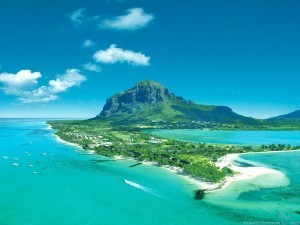 Mark Twain has very rightly said “You gather the idea that Mauritius was made first and then heaven and that heaven was copied after Mauritius”
Mark Twain has very rightly said “You gather the idea that Mauritius was made first and then heaven and that heaven was copied after Mauritius”
Way back when I was young, I had visited Mauritius with a brand new husband in tow. As our plane lost height, I caught sight of a lush green jewel surrounded by turquoise blue waters. Soon afterwards as we drove from the airport to the city, on one side was the vast Indian ocean while beyond were hills in strange shapes The lower slopes of these hills were laden with bougainvillea bushes with colours alternating between magenta and white. As we drove on, we could see long stretches of sugarcane plantations flanking either side of the road. The greenery all around was extremely soothing to the eye.
We finally reached the apartment where we were to spend the next fifteen days of our honeymoon. It was high up on the sixteenth floor and the view was breathtaking – one to write home about. Everywhere I looked I could see the green and blue waters of the ocean changing colours as the day advanced from dawn to dusk. We were very comfortable in the apartment and it felt almost like home. Every morning we would go for long walks, taking in the sights and sound of this little paradise, which was quite laid back then.. On one such walk we visited the Botanical Gardens. A walk through the gardens presented an array of the most beautiful and fragrant flowers. but the pink lotus remains unmatched in beauty. What remains etched in my memory even after so many years, is the large saucer like leaves of the lotus, I hadn’t seen anything like this before and it was a sight I wouldn’t forget in a hurry.On one of our morning sojourns, we also visited a place where the ground was made up of seven distinct colours of earth – the result of. lava flow a long long time ago.
Afternoons were spent swimming in the tranquil waters closest to our apartment. or just lazing around on the pristine white beach. Our quest for the sun and sand and a beach far from the madding crowd ended here. Since it wasn’t one of the well-known beaches, we sometimes had the luxury of having the beach exclusively to ourselves. During the evenings we used to do a lot of window-shopping as we were on a shoe-string budget. Along the windows were displayed branded cosmetics in alluring cases, pretty clothes, stylish shoes, designer bags. Of course these stuff were far beyond our means . So we had to be content with glancing through them and buying some local cosmetics and clothes from the factories that we visited. Since we were staying in a self-contained apartment, there was arrangement for cooking. We thought we would very well manage by cooking some of our meals. We diligently went to the nearby market, Back at the apartment I tried to cook a simple vegetable curry and rice…the rice came out all sticky. In fact it had turned into an inedible glutinous mass and the vegetable had got burnt beyond recognition because I had forgotten to add water! After that disastrous experiment with cooking we continued having tinned pork – ball curry and bread whenever we were perforced to have our meals in the apartment. Believe me it was very yummy. Mauritius being an island with abundant fish, all types of sea food was available. Prawns, the most sought after, were real big. ‘Dholl puri’, an Indian flat bread stuffed with yellow split peas and then rolled and fried is hugely popular in Mauritius. This was also our favourite dish. We used to make a meal of ‘dholl puri’ and grilled prawns whenever we dined out.
On the whole, we found the Mauritians to be very friendly. We had managed to befriend some of the local residents within the first few days of our stay. Since they were all of Indian origin, we felt very much at home in their midst. In one of their houses I had seen dwarf coconut trees with full sized fruits almost touching our head as we sat down in their garden. We were served some of these coconuts and they tasted as good as any normal coconut.. We were privileged to spend the last few days with one of these friends who had taken us home with him. He lived in a villa atop a hill from where the view of the sea with rolling waves crashing on the rocks was exhilarating.The few days that we spent at their house every need of ours was taken care of. Friends and relatives of theirs dropped in just to say hello. We were overwhelmed by their hospitality that too to total strangers like us. They even took us to attend a family wedding.
Our stay in Mauritius suddenly ended or so it seemed. I had nothing to complain about….we had our solitude and the long walks and swimming in the sea and evenings spent window shopping and my disastrous experiment with cooking, spending the last few days with a Mauritian family…..all had a charm of their own. Could anybody ask for more?
About the Author: Onku Gosh
Thank you for reading and commenting. Please enter our next Travel Writing competition and tell your story.
The post Mesmerising Mauritius appeared first on We Said Go Travel.
The Daily Miracle in Ulaanbaatar, Mongolia
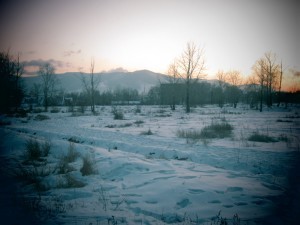 I remember when stepping in a puddle became the greatest moment of my life.
I remember when stepping in a puddle became the greatest moment of my life.
It was a Tuesday in March. I was shuffling down ‘Tourist Street’ back to my office in Ulaanbaatar after lunch, savouring the apple and custard flavour of a Luna Blanca fruit smoothie. I was just outside the museum which housed my gallery, when my foot made a sound I hadn’t heard since arriving six months prior. There was a quiet ‘splash’ as it hit the ground, barely audible but loud enough to reach my ears. I stopped and looked down and a smile as big as the sky crossed my face.
There was water not ice; an unfrozen patch of pavement and drips from the drainpipe above.
I punched a mitten covered fist in the air in celebration.
It didn’t matter that it was seeping through the hole in the side of my boot where the stitching had come undone. It didn’t matter that my sock was now wet and my foot was freezing. It didn’t even matter that this would be short lived, that the temperature would plummet as soon as the sun went down and that this tiny precious puddle would freeze over and disappear as though it had never existed in the first place.
None of it mattered because right now, at this moment, it was above zero degrees!
*
During the long winter months Ulaanbaatar becomes the coldest capital city in the world. With temperatures as low as -40C it wasn’t surprising that such an inhospitable climate would have some kind of impact on my life. Before I left Australia I had prepared what I could, but thought only of the obvious like jackets, gloves and boots. Tried though I might, I couldn’t picture the reality of such a place. What did ‘eight months below zero’ actually mean?
I hadn’t thought that I would spend six months of it indoors. I hadn’t expected a 20 minute walk to be the limit of time outside. How could I have known that the snow wouldn’t melt, that plants wouldn’t grow, what I breathed wasn’t clean or that I’d miss the sight of running water? I certainly didn’t think that the air would hurt my skin.
But it wasn’t all bad.
Unlike back home where time passed too quickly, I become hyper-aware and focused on every moment I was living. It wasn’t a conscious decision – I thought I lived quite mindfully already – but one which slipped unnoticed into my day to day life.
Each morning the icy air would fill my lungs and draw attention to each breath. It made my eyeballs ache and I noticed every blink. I had never before thought of the inside of my nose but began to now that my snot would freeze. Layers and layers of clothing affected my senses and the ground was slippery underfoot, so walking became a concentrated shuffle as I tried to stay upright and alert.
It struck me how strange it was that so much escaped my notice.
Pretty quickly, I learnt to place importance on the insignificant because everything else was just too overwhelming. Correctly pronouncing a colleagues name was a win, as was hailing a cab without too long a wait. I savoured the burn of the vodka in my throat and the muffled quiet of fresh snow, and could find God in a bottle of Sriracha when times got tough.
Thinking about the temperature on the other hand, or counting the days til winters end was a sure fire way to welcome depression.
Looking back on it now, there were more celebrations than not. The conditions were tough but I was appreciative and aware of every second of my life. It wasn’t always productive, and there were times that I wanted to cry or to scream and to punch the stupid weather in a place it hurt most, but it clarified something that I thought I understood.
Every moment is a monument and nothing matters but the present.
*
It would be another month before the weather came close to what my Aussie bones could call warm, but for a minute I had a one girl party on the street.
I danced a little in my fur lined boots.
I shuffled my feet and waggled my hips and waved my arms above my head.
The locals passing me by gave looks of disapproval but I didn’t care. Not a tiny bit.
IT WAS ABOVE ZERO DEGREES AND I HAD A PUDDLE TO STAND IN.
About the Author: Jessie Lumb is an artist and writer from Adelaide, Australia.
Thank you for reading and commenting. Please enter our next Travel Writing competition and tell your story.
The post The Daily Miracle in Ulaanbaatar, Mongolia appeared first on We Said Go Travel.
Australia – The Place to Go
Ask me, “Why go to Australia?” and my response would be “How could one not want to go to Australia!?” As both a country and a continent, Australia is gigantic, encompassing an area of 7.692 million square kilometers/ 2.97 million miles squared, or five percent of the world’s land mass. What it packs into that land, or rather spreads out, is stand alone world class attractions, animals found no where else on the planet, diverse ecosystems and the unceasing Australian smile.

Grey kangaroo with her joey.
With such a grand expanse of land, 32 times bigger than the United Kingdom, it can take a considerable amount of effort to get yourself from point A to B, especially if you are on a shorter trip and do not plan on renting or buying a car. If you are looking for the ultimate touring experience, take away logistical hassles and book one of Scenic Tours award wining guided tours of Australia. Treat yourself to the luxuries of the best highlights of the land down under, or pick one (or more!) regions to dive into more deeply.
It would take life times to explore all the territories, and as recent a February 2014 a new species of mouse was discovered in Queensland’s Springbrook National Park. There is so much for a visitor to try and behold. If you don’t have life times, here’s some of the highlights from the main land to get a taste of it all.
Perth: Don’t let the world’s most isolated capital city fool you, it has everything you want plus more. Go out of your way to ask around and find a place that serves Matso’s Mango Beer. Crafted up in Broom, this is one of the best type of beers you may ever try. Check out funky Freemantle and take a day trip to Rottnest Island, where it’s almost guaranteed to get up close viewings the the Quaokka, a small macropod about the size of a cat. Remember although they look so cute and will ask for food with their pleading little eyes, don’t feed the quokkas. Step into the past and visit the World Heritage Freemantle Prison and learn about the underground aqueducts.

Quokka sleeping.
Cairns and the Tropical North: Welcome to the Sunshine state – don’t forget the sunscreen as you dig your toes into their sandy beaches. Queensland’s diverse geography, lush rain forest and long stretch of coast line offers something for everyone. Try to get up into the Daintree area and look for Cassowaries, an endangered bird upon viewing will have you feel like you stepped into the movie Jurassic Park. Take full advantage of all the fresh fruit and veggies from local markets and eat as many mangoes as you can. Embrace the easy going pride of Queenslanders and try going to the supermarket barefoot, it will save time when you jump into the ocean to swim in one of the seven wonders of the world, The Great Barrier Reef.
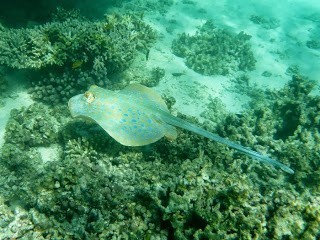
Blue spotted ray.
Melbourne: Enjoy artsy streets and take a wander down the back alleyways. There you’ll find vibrant, bustling cafes. Wanting to give suggestions for the best cafes, I recently asked my dear friend Leanne which coffee shop was her favorite and her (I’ll give you the abbreviated response) was, “…Melbourne is a love affair waiting to happen for any visitor, be it the coffee, the culture/food or the passionate, talented people. As for a favorite coffee shop, too many to mention. So many great baristas, Melbourne is so spoilt. It doesn’t matter where one is, they are never far from the perfect cup of coffee.” With that said, you can’t go wrong, enjoy your own adventuring and choose a different spot each day for your afternoon cuppa, Ozzie lingo for a tea or a coffee. And please, go for a real coffee, order a cappuccino, latte or try the flat white, an Australian specialty.

A thorny devil crossing the path.
Alice Springs: The heart of the country surrounded by red earth. There’s a certain energy that comes from this vast, red expanse. A city where the history of the past is still struggling to find it’s place in the present. Here is a place to ask questions and listen to the stories of the lives of the Aboriginals who have inhabited the continent for at least the last 40,000 years. If you are looking to buy a piece of Aboriginal art, this is the place to do it. Ask around and find a gallery that ensures they are paying a fair percent to the artist. A must do is to attend Andrew Langford’s sounds of star light show.
Quietly go to Uluru and experience in person what no photo could ever show you. Prior to going I had seen hundreds of images of Uluru, yet nothing came close to what I saw viewing the massive rock with my own eyes for the first time. Walk around the base and keep your eyes out for thorny devils and legless lizards.
Sydney: Talk about one amazing gateway city! Sydney’s got it all, the Harbor Bridge, which is the world’s longest steel arched bridge, museums, dining, art and infamous Sydney Opera House. Take a tour and learn of it’s controversial building history (keep your receipt and you should be able to get a discount for a future performance). Stroll through Sydney’s Royal Botanic Gardens along the water and see hundreds of flying foxes hanging upside down in the trees. To see the sights from the water, grab a ferry to Manly Beach and watch surfers catching waves.

Flying foxes hanging out in Sydney.
After living in Australia for two years, it still felt like I had only scratched the surface as there are so many regions I want to explore more thoroughly. I would go back in heart beat. If you have been debating on where to go for your next trip, now is the time to get to Australia. The country is thriving, the people are happy and ready to welcome you. If you are looking for your next hassle free vacation, don’t hesitate and book a guided tour of Australia today.
The post Australia – The Place to Go appeared first on We Said Go Travel.
Tonsured in Tamil Nadu, India
I arrived in Chennai, India, in the southern state of Tamil Nadu, with a head full of curly, brown hair. It was the longest my hair had ever been, falling down to my shoulders in a pyramid of curls, all due to my girlfriend Holly’s move to India. She left the United States six months earlier, and I resolved not to cut my hair until I saw her again.
“You’re going to want to cut that soon,” she advised me when I got off the plane on a muggy October morning. Chennai days were swelteringly hot and humid, even in the winter. Plus, one of the places where Holly worked had a lice problem.
“My friend Niranjan said that you can donate your hair to a Hindu temple, and they will shave off it for you,” she suggested. I filed this information away.
Meanwhile, the next six weeks passed in stumbling, clumsy fashion as I labored to adjust to the Chennai lifestyle. The transition was rough. Chennai is a “vibrant” place (read: loud, crowded, and boisterous). It is a hard city to navigate, or even cross the street, and the unfamiliar foods were wreaking havoc on my stomach. How could something so delicious cause such discomfort? Throughout this period, I kept my guard up, warily holding myself at a remove from my surroundings.
In late December, just after our first Christmas away from home and family in the U.S., one of Holly’s Indian friends, Simona, invited us to her home in Madurai.
“There are many temples. Bert can get his head done,” Simona said. She was eager for us to leave the big city, and see other parts of Tamil Nadu. In Madurai, a city that is 2,500 years old, the famous Hindu temples date back hundreds of years, and the faithful make frequent pilgrimages to worship at these holy shrines.
The temple itself (Mariammam) was unassuming, yet packed full of bowing devotees, laughing children, praying businessmen, and persistent beggars. The act of having one’s head shaved is called tonsure, and it is a tradition that has many expressions across numerous faiths. For Hindus, tonsure is a way to offer a sacrifice to the gods, and a blessing is received in return.
I was instructed to sit on the floor in a small concrete room. A man dressed in jeans and a blue shirt sat crosslegged in the corner. As I sat, he put his hands on my head and moved me into position. Using a straight razor, he started at my hairline and methodically worked his way back. Time slowed down. I closed my eyes and listened to the prickly sound of the razor and the chanting in the background. I prayed for a spirit of peace, and offered a blessing of health and happiness to my family and friends, old and new. I opened my senses to the experience, let the guard down on my heart, and felt my soul fill with gratitude to my kind hosts, and their large country of which I was now a tiny part.
That was the precise moment that I became fully present in India.
It was a humbling experience. I felt renewed, refreshed, open to change, and literally lightheaded. Tonsure accomplished in ten minutes what the previous six weeks had failed to teach me. Immersion was the key, and I was the novice initiate, finally ready to take the plunge.
For the rest of the day, I was a sight to see, like a bald, white unicorn. Many people approached me to take photos and thank me for my offering. I smiled and thanked them back. When we visited the glorious Meenakshi temple, I stood in mute wonder at the beating heart and vibrant history of this powerful religion. There was still so much that I did not know. At one point, an elephant’s trunk rubbed my bald head in blessing.
What I have taken with me since that day, after my return to Chennai, is a recognition of the patterns that form the life of a city that initially seemed so chaotic and disorganized. Once I saw the structure in the rituals, I found an honest appreciation for the daily expression of a living faith. It is hard work to give so much of your time and energy in recognition of a higher power. It is a daily sacrifice, yet I see it all around, and it tells me that we are not heroic as individuals. We share this planet with billions of others, and together we can honor our common humanity by offering our gifts of presence, humility, and understanding. Our gods smile upon us when we do.
I rub the small prickles on my scalp when I need a reminder.
About the Author: Robert Caswell is an artist and art therapist who has worked in hospitals, clinics, and outpatient centers for adults with severe mental illness. He enjoys traveling every time he gets the chance, even if he has to create the chance for himself. His most recent experience was a journey to southern India.
Thank you for reading and commenting. Please enter our next Travel Writing competition and tell your story.
Call
Send SMS
Add to Skype
You’ll need Skype CreditFree via Skype
The post Tonsured in Tamil Nadu, India appeared first on We Said Go Travel.
March 20, 2014
Friendly Faces in Colombia
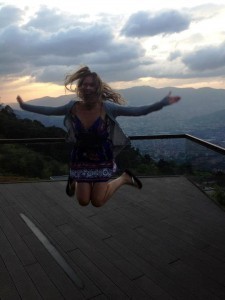 My time in Colombia was brief but certainly very sweet. From admiring street art on the buildings in Bogota, to embracing the peace and beauty in the colonial town of Villa de Leyva, to endless partying in Medellin, every minute of my time there was well spent. Although the country has many positive qualities, and I could provide endless reasons to go, the thing that impressed me most about Colombia was how friendly and open the people are there. Having woken up unusually early one morning, I decided to visit a café just around the corner from my hostel in Medellin, where I sat writing in my journal whilst eating breakfast. After a few minutes, the guy on the table next to me asked what I was doing and we began chatting. His name was Jerry, he owned a diamond company and what sounded like a pretty plush apartment overlooking the city. I was eager to accept when he asked if I’d like to see this apartment, but felt nervous at the prospect of going to a stranger’s house alone, so I returned to the hostel, dragged my friend Will out of bed and took him along with me.
My time in Colombia was brief but certainly very sweet. From admiring street art on the buildings in Bogota, to embracing the peace and beauty in the colonial town of Villa de Leyva, to endless partying in Medellin, every minute of my time there was well spent. Although the country has many positive qualities, and I could provide endless reasons to go, the thing that impressed me most about Colombia was how friendly and open the people are there. Having woken up unusually early one morning, I decided to visit a café just around the corner from my hostel in Medellin, where I sat writing in my journal whilst eating breakfast. After a few minutes, the guy on the table next to me asked what I was doing and we began chatting. His name was Jerry, he owned a diamond company and what sounded like a pretty plush apartment overlooking the city. I was eager to accept when he asked if I’d like to see this apartment, but felt nervous at the prospect of going to a stranger’s house alone, so I returned to the hostel, dragged my friend Will out of bed and took him along with me.
Jerry’s house was indeed impressive; modern, stylish, spacious and so high up that looking down at the jungle beneath us from his balcony gave me vertigo. We spent the entire morning there, chatting, listening to music, eating freshly picked fruit and basking in the glorious rays of sunshine. I was hesitant to leave, but at the same time didn’t want to outstay my welcome, so we decided to make our way back before lunchtime. Not only did Gerry give us both warm hugs as we left, he also gave us t-shirts, hats and key rings with his company logo on as souvenirs of our special morning.
Amazingly enough, that wasn’t the only time we were welcomed in to another person’s home; that very same day, a woman overheard us asking a waitress if she could recommend a good spot to watch the sunset from, and she instantly chipped in and told us we could watch if from her balcony should we like. Having had such a positive experience with Gerry, we didn’t hesitate in saying yes and, before we knew it, we were sitting in this woman’s car with her husband and three gorgeous children driving up the windy mountain roads to their house. The view from their balcony could not have been any more spectacular, leading me to believe that we had genuinely found the most perfect place. Carla, the mother, brought us cups of rich, delicious Colombian coffee and the seven of us sat together admiring the city from above as it glistened in the warm, soft glow of the evening sun. Once it grew dark, we returned inside, where the children excitedly took us from room to room so that they could show us their toys and play with us. The whole family could not have been kinder and more generous towards us, they even drove us to a nearby restaurant for dinner and gave us their contact details, urging us to get in touch if ever we needed anything.
After two such amazing experiences in just one day, I was convinced that the people in Colombia had to the friendliest in all Latin America. I only wish I could have spent more time there, but I know that one day I’ll be back for sure, and will no doubt pop in to visit Gerry and Carla’s family once again.
About the Author: Camilla (Milly) Day is a lively, energetic person who tries to make the most of every day. My favourite things include travelling, writing, food & wine, music, dancing and nature. I am currently working as English Content Manager for a tourism agency based in Argentina, writing articles about travel (and loving every minute of it).
Thank you for reading and commenting. Please enter our next Travel Writing competition and tell your story.
The post Friendly Faces in Colombia appeared first on We Said Go Travel.
The Pedaling Poet and the Perfume River, Vietnam
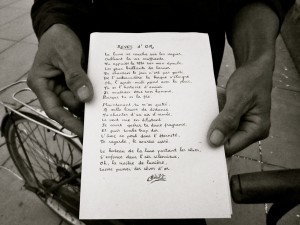 Once upon a time in Hue Vietnam, lovers didn’t need a sense of direction to find romance–they would follow their nose and arrive at the Perfume River.
Once upon a time in Hue Vietnam, lovers didn’t need a sense of direction to find romance–they would follow their nose and arrive at the Perfume River.
A saccharine fragrance carried by the Perfume River lured artists and romantics from all over the city. Some say the captivating aroma came from wild flora that fell into the water as it slithered its way through Day Truong Son Mountains. But that was decades ago, one war veteran told me, before the river became an unlikely victim of the Vietnam War and lost its scent.
I knew none of this history when first I visited the river. All I knew was on this particular night, at the waterfront near Le Loi Street, I sat beside my husband on a stone bench captivated by the riverside ambience. A restaurant shaped like a lotus at bloom, fiery dragon boats adrift, Truong Tien Bridge with its coruscating kaleidoscope of colors glistering on the waters–this place was clearly a refuge for love.
Moments like this might have gone unnoticed if I were back home in California, but it was our fifth month backpacking in Southeast Asia. When you’re married and traveling on a budget, romance in the air can get overpowered by the miasma of spattered urine from public squat toilets, sweaty T-shirts reeking of underarm must, or bug repellant to ward off malaria-carrying mosquitos. The Perfume River gave me a kind of ease where I could, at last, hold Russ’ hand without holding my breath. On that bench we sat in the most enchanted, uninterrupted bliss.
Until an older man approached me.
He rode bicycle, metal basket attached. Even after months of living abroad, I still had trouble turning down peddlers. But I refused to let him rob us of our bliss. So when the man reached into his basket, I firmly shook my head. He moved on to a group of French tourist who blew right past him. Unrelenting, he came back and asked if we would read his poem. I didn’t have the heart to shoo him again.
“All right, go ahead” I said. “Show us your poem.”
He extended a folded piece of paper which I flattened and held between Russ and I, the side written in English. I skimmed the cursive letters in forced silence while the poet lingered.
His name was Le Cong and his poem “Gold Dream” tells the story of how he longs to be with the woman he loves. A fragment of the poem reads:
Now you’re leaving,
Thousands of ocean separation.
You sing love’s song.
The wind crying.
I seem to find your fragrance,
Then fall unsteadily
Soul is losing in eternity,
Looking at you, laughter broken up…
“You say here ‘ocean separation’,” inquired my husband – always the journalist, “where’s she now?”
He told us she lives in Hue. But it feels like a great distance to him because she is married to someone else.
Perhaps I caught a faint whiff of the mystical river and fell entranced because, for a spell, my mind went elsewhere. I ruminated on the times I sat pitifully beside my husband, tormented by motion sickness on decrepit overnight trains. Or the time our beach bungalow in Lombok, Indonesia came with a family of gargantuan cockroaches, making any touch from Russ trigger thoughts of tingly tentacles. Ever since we left the U.S., seems like Perfume-River moments have come a lot less often. Had I let romance become a casualty of our nomadic life?
I then asked Le Cong how he managed to survive his loss.
“If I love, I make poetry,” he said. “If I never love, I make nothing.”
The difference between Le Cong and me is that he had figured out a way to make the most of his conditions, even if they were less than ideal. Whereas, there I was in Vietnam, seeing for the first time how many moments I let slip by because of my quixotic ideas of romance, rather than seizing each moment that we are given.
When we rose to leave, I slipped my arm through Russ’ arm and urged him to give a few Vietnamese Dong. But Le Cong refused any money.
“Cảm ơn,” I said.
He thanked us in return for simply engaging. Soon after, we left the banks of the Perfume River, headed to our backstreet budget hotel. Behind us, where bridge lights glistened on the river, I spotted the poet pedaling in the distance, in search of someone else who might spare a moment to hear a love story.
About the Author: Asia Nichols, a freelance writer from the Bay Area, has been vagabonding through Southeast Asia, India and Nepal since 2011. Read more about her marriage and travel adventures at www.ourfirst100days.com.
Thank you for reading and commenting. Please enter our next Travel Writing competition and tell your story.
The post The Pedaling Poet and the Perfume River, Vietnam appeared first on We Said Go Travel.
Eating and Drinking Around Acqui Terme, Italy
A couple decades ago, when I was just out of college, I moved to Italy to work as an au pair. Unlike most travelers, I did not end up in a city like Florence or Rome but rather a small town in the region of Piedmont where no one spoke English. I knew nothing about wine at the time but everyday day I would meet my new Italian friends at the local bar for aperitivi and they would do the ordering. And, each day a glass would be placed in front of me filled with a red wine that was slightly sweet and slightly sparkling and very delicious. It was Brachetto d’Acqui.
A recent trip took me back to Piedmont, to the heart of where Brachetto is from, Acqui Terme. This ancient Roman town, an 1 ½ hour southeast from Milan, became my home base for three days. We settled in at the Grand Hotel Nuove Terme which overlooks the town square and began the tour of eating and drinking and eating and drinking some more.
Eating:
Piedmont is a land for gourmands. From vitello tonnato (veal with tuna sauce) and Fassone Vitello (a Piedmontese cow) to gnocchi, risotto and agnolotti del Plin (made by hand) to porcini mushrooms and Robiola di Roccaverano, it is not hard to eat your way through the region. Here are some great spots to visit:
Ristorante Nouovo Parisio - Located just of the center square of Acqui Terme, we enjoyed dishes made with fresh local Porcini mushrooms, such as Insalata di Funghi Porcini, Gnocchi con Funghi Porcini, Funghi Porcini Fritti, and a cheese plate featuring the local goats milk cheese Robiola di Roccaverano.
Piazzetta Verdi, 3
15011 Acqui Terme, Italy
+39 0144 442196
www.ristorantenuovoparisio.it
Closed Wednesdays
Osteria Bun Ben Bon – Located 25 minutes north of Acqui Terme, this award winning local restaurant served up risotto with funghi and brachetto wine, as well as a dessert Zabayone made with Brachetto.
Strada Vecchia Asti 66
14049 Nizza Monferrato, Italy
+39 0141 726347
www.bunbenbon.com
Open for lunch and dinner
Closed Tuesday night and all day Wednesday
Enoteca La Curia - As it was truffle season when I was there, highlights included vitello tonato, Robiola di Roccaverano with truffles and handmade Tajarin (tagliolini) with fresh porcini mushrooms.
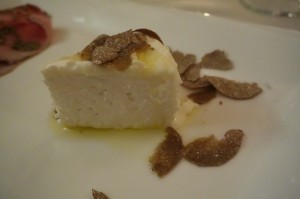
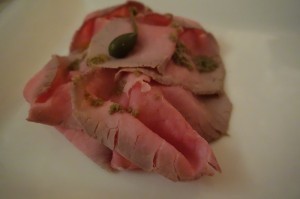
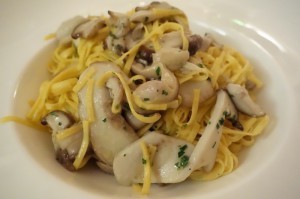
Via Alla Bollente n.72
Acqui Terme, Italy
+39 0144 356049
info@enotecalacuria.com
Closed Mondays
I Bologna – At the family restaurant of Braida Winery, we watched the chef’s mother make handmade agnolotti that were delicate and delicious and then enjoyed some of the tastiest desserts of the trip – coconut panna cotta with pineapple granita, crème brulee, hazelnut gelato and chocolate cakes, which all paired perfectly with Brachetto d’ Acqui.
Via Nicola Sardi, 4
14030 Rocchetta Tanaro
Asti, Italy
+39 0141 644600
www.trattoriaibologna.it
Closed Tuesdays
The B. Ristorante – The restaurant is located in a former home and here we took a cooking class and learned how to make both a sweet dish (Bavarois or Bavarian cream) and a savory dish (Involtini made with pork wrapped around lardo and prunes).
Strada Canelli, 57
14049 Nizza Monferrto, Italy
+39 347 4315526
www.ristorantetheb.it
Drinking:
A trip to Piemont isn’t complete without visiting wineries and tasting the amazing wines of the region (Barbera, Dolcetto, Nebbiolo, Gavi, Moscato and, of course, Brachetto d’ Acqui). Brachetto is a red Italian wine grape that produces a light-bodied, highly aromatic, slightly sweet, slightly sparkling red wine with notes of strawberries. Perfect for aperitivi or with deserts, Brachetto d’ Acqui is a wine in which they say we should, “share the bliss.”
Marenco Winery - Michela Marenco, third generation in her family, runs the winery along with her husband Giovanni Giancosta. Michele and Giovanni told me that they love Brachetto because “it is sweet but not sticky.”
Piazza Vittorio Emanuele, 10
15019 Strevi Alessandria, Italy
+39 0144 363133
www.marencovini.com
Bersano Vini - one of the most historical wineries in the area, founder Arturo Bersano is credited as being the father of Brachetto Spumante.
Piazza Dante, 21
14049 Nizza Monferato (Asti), Italy
+39 0141 720211
www.bersano.it
TreSecoli – Begun in 1887, it is the association of two different co-opperative wineries and is named in honor of the three centuries and generations of people who have worked there.
Via Stazione, 15
14046 Mombaruzzo, Italy
+39 0141 77019
www.tresecoli.com
Ca’ dei Mandorli - Father and son Paul and Stefano Ricagno run the family winery that has been producing wine for over two centuries.
Stradale Alessandria, 90
15011 Acqui Terme, Italy
+39 0144 55741
www.cadeimandorli.com
Braida - Raffaella Braida and her brother Giuseppe are the third generation to run the family winery. Their father Giacomo made the winery famous by producing the flagship wine of the company, a Barbera called Bricco dell’Uccellone.
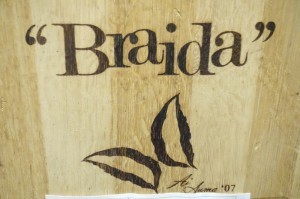
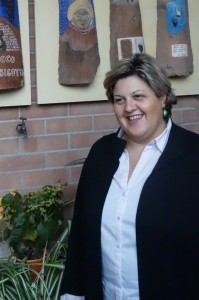
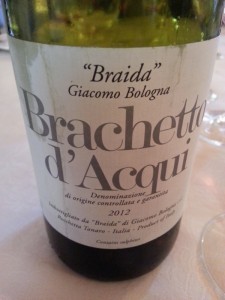
Strada Provinciale 27, n.9
14030 Roccetta Tanaro
Asti, Italy
+39 0141 644113
www.braida.it
Banfi - With wineries in both Tuscany and in Piedmont, the Piedmont winery specializes in sparkling wines and most importantly, Rosa Regale made from Brachetto grown in La Rosa Vineyard in the town of Acqui Terme.
Via Vittorio Veneto
15019 Strevi, Italy
+39 0144 362600
www.casteelobanfi.com/banfipiemonte
www.rosaregale.com
The post Eating and Drinking Around Acqui Terme, Italy appeared first on We Said Go Travel.
We Said Go Travel
We Said Go Travel is a global community of over sixteen hundred writers with articles from every continent.
Stories are shared with photos and video from a perspective of the transformative power of travel. We Said Go Travel has hosted live and online events as well as travel writing contests around the world. ...more
- Lisa Niver's profile
- 57 followers


